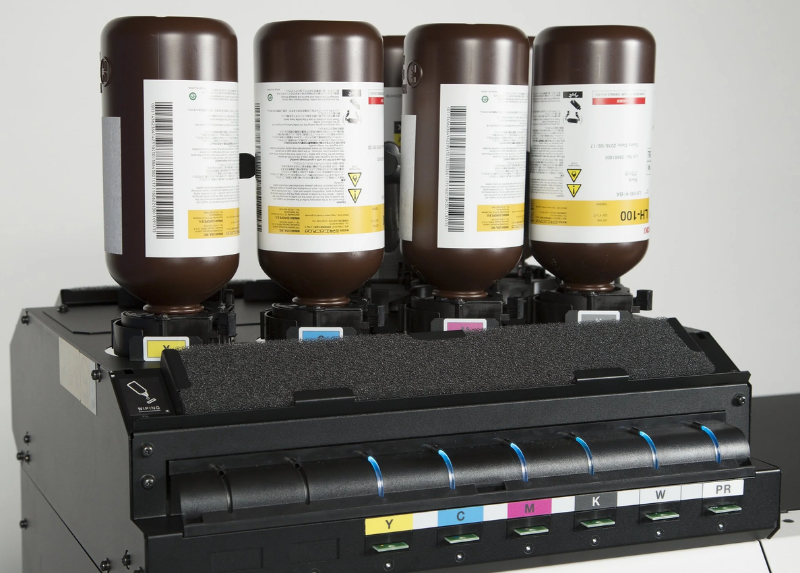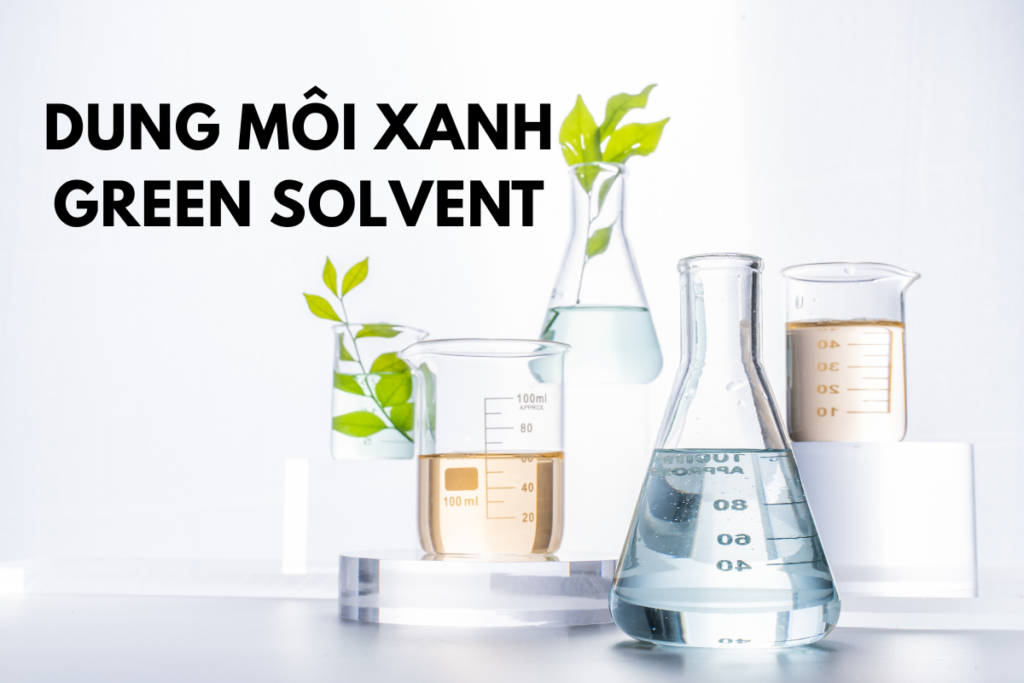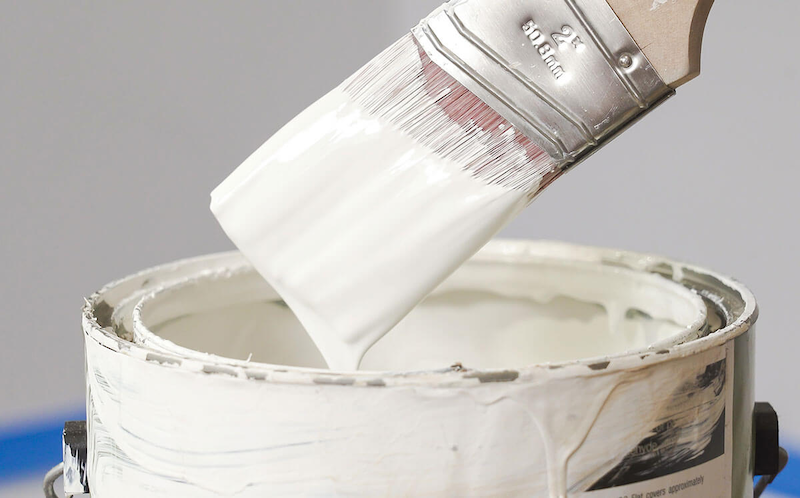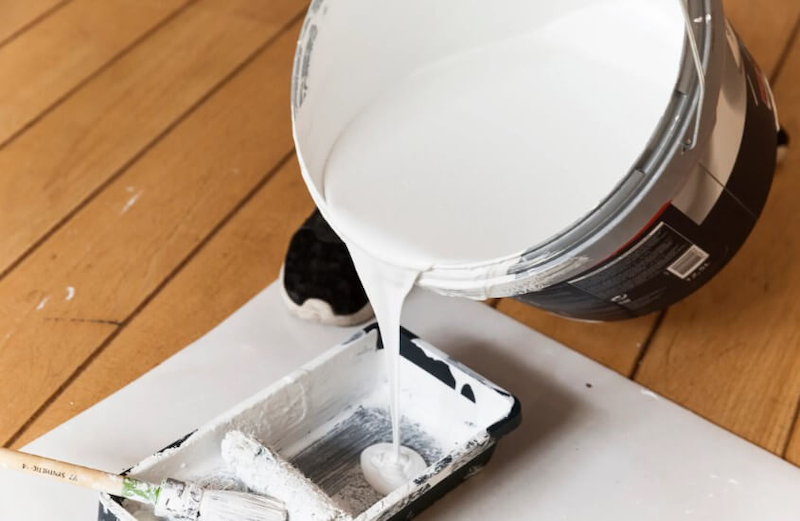What Is a Polar Solvent? Comparison Between Polar and Non-Polar Solvents
30/06/2025
|
Industry news
Polar solvents are essential components in various fields from chemistry and industry to everyday life due to their ability to effectively dissolve polar compounds. Understanding polar solvents is crucial to optimizing their use. This article provides an overview of polar solvents, including their definition, classification, practical applications, and the most commonly used types today.
What Is a Polar Solvent?
A polar solvent is a solvent whose molecules have a dipole moment due to the uneven distribution of electrical charge. This occurs when there is a difference in electronegativity between atoms in a bond, causing one end of the molecule to carry a partial positive charge and the other end a partial negative charge. Polar solvents typically dissolve polar substances (like salt or sugar) and some ionic compounds, based on the principle “like dissolves like.”
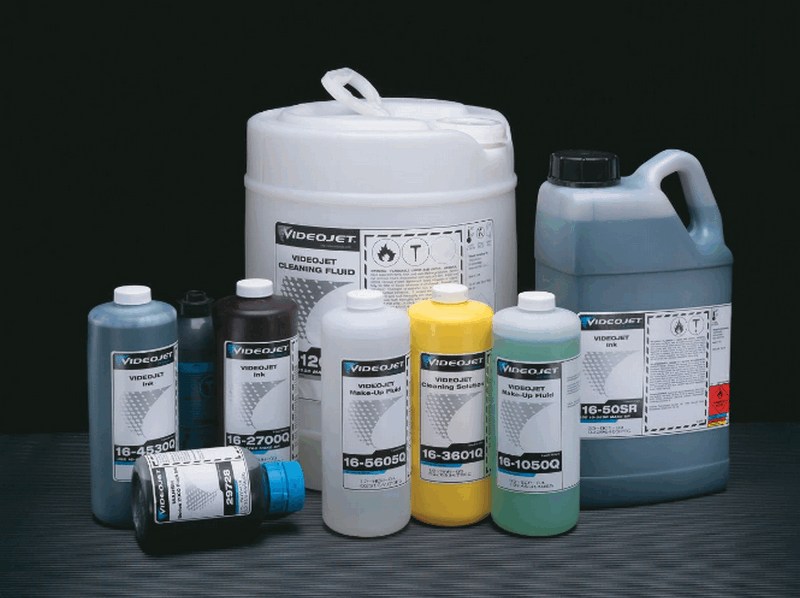
Classification of Polar Solvents
Protic Polar Solvents
- Characteristics: Contain hydrogen bonding (H bonded to O, N, or F), enabling them to form hydrogen bonds with solutes.
- Examples:
- Water (H₂O)
- Methanol (CH₃OH)
- Ethanol (C₂H₅OH)
- Acetic acid (CH₃COOH)
- Applications: Used to dissolve salts, acids, and bases; ideal for reactions involving hydrogen bonding.
Aprotic Polar Solvents
- Characteristics: Lack strong hydrogen bonding capabilities; do not easily form hydrogen bonds with solutes, but still have significant dipole moments.
- Examples:
- Dimethyl sulfoxide (DMSO)
- Acetone (CH₃COCH₃)
- Dimethylformamide (DMF)
- Acetonitrile (CH₃CN)
- Applications: Suitable for organic reactions sensitive to hydrogen bonding, such as SN₂ reactions.
Comparison Between Polar and Non-Polar Solvents
| Criteria | Polar Solvents | Non-Polar Solvents |
| Dipole Moment | Present (uneven charge distribution) | Absent or very small |
| Solubility | Dissolve polar and ionic compounds (e.g., salt, sugar) | Dissolve non-polar compounds (e.g., oil, benzene) |
| Hydrogen Bonding | Capable of hydrogen bonding (especially protic solvents) | Do not form hydrogen bonds |
| Dielectric Constant | High (usually >15) | Low (usually <15) |
| Examples | Water, ethanol, acetone, DMSO | Hexane, benzene, toluene, chloroform |
| Applications | Ionic reactions, salt dissolution, biological processes | Organic reactions, oil and fat extraction |
Conclusion from the Comparison Table:
- Polar solvents: Ideal for reactions requiring ionization or hydrogen bonding. For example, water is an excellent solvent in biology and inorganic chemistry.
- Non-polar solvents: Commonly used in organic chemistry to dissolve non-polar substances like hydrocarbons or lipids.
Summary of 5 Common Polar Aprotic Solvents
Ethyl Acetate
- Boiling Point: 77°C
- Dielectric Constant: 6.02
- Density: 0.894 g/ml
- Dipole Moment: 1.78 D
- Dispersion (δD): 15.8
- Polarity (δP): 5.3
- Hydrogen Bonding (δH): 7.2
Ethyl acetate (chemical formula: CH₃-C(=O)-O-CH₂-CH₃) is a volatile, non-hygroscopic, non-toxic solvent. It is widely used in the paint, printing ink, and chemical extraction industries due to its low toxicity and fast evaporation.
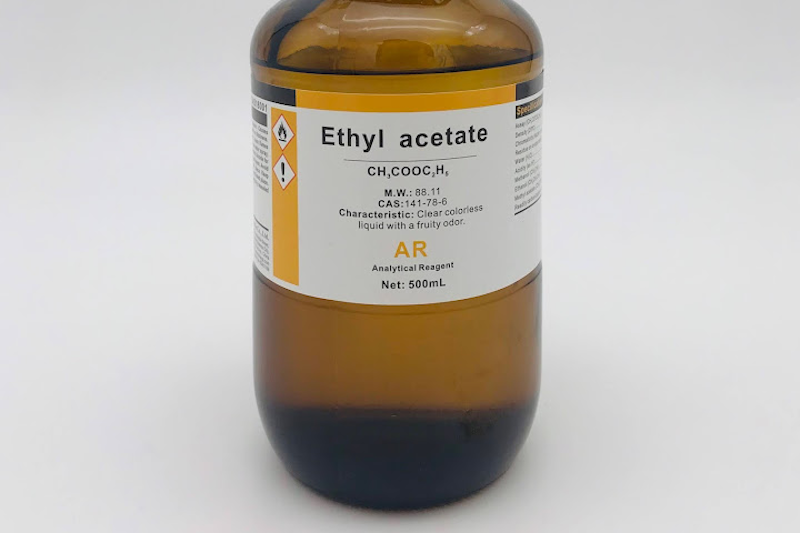
Tetrahydrofuran (THF)
- Boiling Point: 66°C
- Dielectric Constant: 7.5
- Density: 0.886 g/ml
- Dipole Moment: 1.75 D
- Dispersion (δD): 16.8
- Polarity (δP): 5.7
- Hydrogen Bonding (δH): 8.0
Tetrahydrofuran is a medium-polarity solvent capable of dissolving both polar and non-polar compounds. As an aprotic solvent, THF is miscible with water and can form solid hydrate clathrates with water at low temperatures.
Dichloromethane
- Boiling Point: 40°C
- Dielectric Constant: 9.1
- Density: 1.3266 g/ml
- Dipole Moment: 1.60 D
- Dispersion (δD): 17.0
- Polarity (δP): 7.3
- Hydrogen Bonding (δH): 7.1
Dichloromethane is a medium-polarity solvent with a strong dipole moment (1.6 Debye), enabling it to dissolve a wide range of organic compounds. Its fast evaporation rate, low boiling point, and excellent solvency make it widely used in industries, laboratories, and medicine.

Acetone
- Boiling Point: 56°C
- Dielectric Constant: 20.7
- Density: 0.786 g/ml
- Dipole Moment: 2.88 D
- Dispersion (δD): 15.5
- Polarity (δP): 10.4
- Hydrogen Bonding (δH): 7.0
Acetone is a polar solvent that possesses both polar and non-polar characteristics, thanks to its molecular structure containing a polar carbonyl group (C=O) and non-polar methyl groups (C–CH₃). It is widely used in everyday life and industry for example, in nail polish removers, paints, fuel thinning, and medical equipment sterilization.
Dimethylformamide (DMF)
- Boiling Point: 153°C
- Dielectric Constant: 38
- Density: 0.944 g/ml
- Dipole Moment: 3.82 D
- Dispersion (δD): 17.4
- Polarity (δP): 13.7
- Hydrogen Bonding (δH): 11.3
Dimethylformamide (DMF) is a highly polar solvent that dissolves well in water, evaporates slowly, and has a high boiling point. It is miscible with most organic liquids, making it an ideal solvent for chemical reactions.
Summary of 4 Common Protic Polar Solvents
n-Butanol (MEK)
- Boiling Point: 118°C
- Dielectric Constant: 18
- Density: 0.810 g/ml
- Dipole Moment: 1.63 D
- Dispersion (δD): 16.0
- Polarity (δP): 5.7
- Hydrogen Bonding (δH): 15.8
n-Butanol is a common solvent with moderate polarity. It can dissolve non-polar substances such as oils, fats, and various organic compounds. It is widely used for thinning paints and coatings like dyes, inks, etc.
Isopropanol
- Boiling Point: 82°C
- Dielectric Constant: 18
- Density: 0.785 g/ml
- Dipole Moment: 1.66 D
- Dispersion (δD): 15.8
- Polarity (δP): 6.1
- Hydrogen Bonding (δH): 16.4
Isopropanol is a protic polar solvent in liquid form, clear and with an alcohol-like odor. It is effective in dissolving non-polar compounds, making it useful in dissolving grease and commonly used in paints, inks, and cleaning agents.
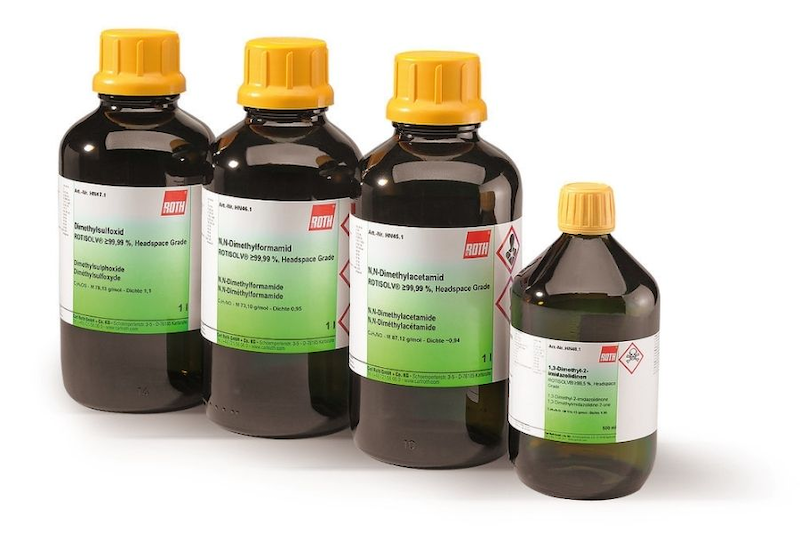
Methanol
- Boiling Point: 65°C
- Dielectric Constant: 33
- Density: 0.791 g/ml
- Dipole Moment: 1.70 D
- Dispersion (δD): 14.7
- Polarity (δP): 12.3
- Hydrogen Bonding (δH): 22.3
Methanol is a colorless liquid with an alcoholic odor and is volatile at room temperature. It is polar, easily miscible with water, alcohol, ether, benzene, and most organic solvents. Methanol can dissolve many types of resins but has limited solubility in oils and fats.

Water
- Boiling Point: 100°C
- Dielectric Constant: 80
- Density: 1.000 g/ml
- Dipole Moment: 1.85 D
- Dispersion (δD): 15.5
- Polarity (δP): 16.0
- Hydrogen Bonding (δH): 42.3
Water is the most important and widely used polar solvent in nature. Thanks to its dipolar nature, it effectively dissolves many polar and ionic substances such as acids, salts, and alcohols. Water is not only vital in biological processes but also serves as an excellent solvent for many inorganic and organic substances. It is widely applied in industry, cooking, cleaning, and laundry.
Applications of Polar Solvents in Daily Life and Production
- Paint Industry: Polar solvents are used to dilute paints and improve properties such as adhesion, mold resistance, and drying speed. Common solvents include toluene, acetone, and xylene.
- Printing Industry: Polar solvents are essential in ink formulation, helping adjust viscosity, drying time, and adhesion on various surfaces. Popular solvents include Ethyl Acetate, Xylene, and Butyl Carbitol (DBGE).
- Pharmaceuticals and Healthcare: Polar solvents play a vital role in drug manufacturing, from extracting active ingredients to formulation. Their ability to dissolve and stabilize chemical compounds has enabled the production of essential drugs such as penicillin, ointments, aspirin, and cough medicine.
- Cosmetics Industry: Polar solvents dissolve active ingredients and carriers in cosmetics, enhancing absorption and effectiveness. For example, ethanol is used in perfumes, ethyl acetate and acetone are used in nail polish and removers.
- Automotive Industry: Monoethylene Glycol is used as a convective heat transfer fluid in automobiles.
- Plastic Intermediates: Polar solvents help produce plastic intermediates for PET bottles, food containers, packaging films, etc., thanks to their ability to dissolve resins and polymers during production.
- Agriculture: Isophorone is used to manufacture certain pesticides and herbicides. Due to its toxicity and environmental impact, its use must be strictly regulated and follow guidelines.
- Laboratory and Research: Polar solvents play a crucial role in chemical, biological, and scientific research – from sample analysis and extraction to purification and synthesis.
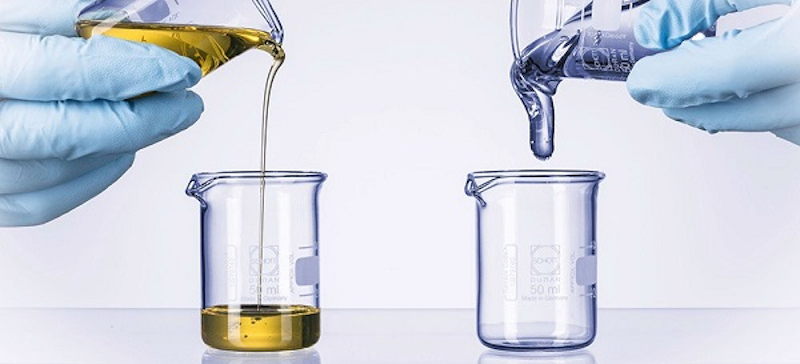
The Role of Polar Solvents in Printing Ink
Polar solvents in solvent-based inks, such as gravure or flexographic inks, play a crucial role in ensuring ink quality, printing efficiency, and compatibility with various substrates. Below are the specific roles of polar solvents (such as Ethanol, Isopropanol, Ethyl Acetate, and MEK):
Dissolving Polar Components in Ink
- Function: Polar solvents can dissolve polar components in ink, including:
- Polar resins: Such as vinyl resins, nitrocellulose, or polyacrylates, commonly used as binders in printing ink.
- Pigments: Some organic pigments are polar and require polar solvents for even dispersion.
- Additives: Additives like wetting agents or defoamers often need polar solvents to be fully dissolved.
- Example: Ethanol or MEK helps dissolve nitrocellulose resin in gravure ink, ensuring a uniform ink mixture without clumping.
Adjusting Ink Viscosity
- Function: Polar solvents help regulate ink viscosity to ensure proper flow through printing systems (gravure or flexo).
- Excessively high viscosity can clog the printing cylinder, while too low viscosity can lead to ink spreading or poor adhesion.
- Polar solvents like Isopropanol or Ethyl Acetate have low viscosity and can be easily adjusted to reach the ideal range (typically 20 – 30 seconds measured with a No.4 Ford cup).
- Example: In gravure printing on PET film, Ethyl Acetate is added to lower the viscosity, allowing smooth ink flow and a sharp, thin print layer.
Accelerating Ink Drying Time
- Function: Polar solvents generally evaporate quickly (e.g., MEK with a boiling point ~80°C, Ethanol ~78°C), which allows ink to dry fast after printing crucial for high-speed printing.
- This helps prevent smudging, set-off, or ink transfer between film layers or onto the printing cylinder.
- Example: MEK is used in gravure inks to ensure rapid drying on OPP film, suitable for high-speed food packaging lines.
Improving Adhesion on Polar Surfaces
- Function: Polar solvents are more compatible with slightly polar surfaces such as PET films or corona-treated plastic films (which have increased surface energy).
- They promote better ink wetting, improving adhesion and durability of the printed layer.
- Example: Ethyl Acetate in gravure inks enhances adhesion on PET films used in cosmetic packaging, ensuring the print layer does not peel when exposed to moisture or chemicals.

Aiding Pigment Dispersion and Print Quality
- Function: Polar solvents help disperse pigments evenly within the ink, ensuring consistent, vibrant colors without streaks or blotching. They also improve ink smoothness, producing sharper prints especially important for small details or complex images.
- Example: Ethanol or Isopropanol is used to disperse pigments in flexographic inks, delivering vivid prints on OPP film for food packaging.
Compatibility with Solvent Blends
- Function: Polar solvents are often mixed with non-polar solvents (like Toluene or Xylene) to create a balanced solvent system suitable for both polar and non-polar surfaces.
- Example: A blend of MEK (polar) and Toluene (non-polar) in gravure ink enables effective adhesion on both PET (slightly polar) and PE (non-polar) films.
- Benefit: This combination maximizes ink performance, from adhesion and drying speed to overall print quality.
Reducing Environmental Impact (in Certain Cases)
- Function: Some polar solvents like Ethanol or Isopropanol are less toxic than non-polar solvents such as Toluene, helping reduce health and environmental risks.
- They are often preferred in food packaging applications that require high safety standards.
- Example: Ethanol is partially used to replace MEK in gravure inks for food packaging, complying with food safety regulations (e.g., FDA or EU standards).
Notes on Using Polar Solvents
- Safety: Polar solvents like MEK or Ethyl Acetate are flammable and may irritate the respiratory system; they should be used in well-ventilated areas with appropriate PPE.
- Surface Compatibility: The effectiveness of polar solvents depends on surface treatment (e.g., corona-treated films with surface energy of 38 – 42 dyne/cm).
- Mixing Ratio: It’s important to adjust the ratio of polar and non-polar solvents based on the film type, ink formulation, and printing conditions for optimal results.
Frequently Asked Questions About Polar Solvents
Polarity is one of the most important characteristics of a solvent, determining its solubility capabilities. Below are answers to common questions related to polar solvents:
Is ethanol a polar or non-polar solvent?
Ethanol (C₂H₅OH) is a polar solvent. It contains a hydroxyl group (-OH) in its structure, which enables strong hydrogen bonding. As a result, ethanol can effectively dissolve both polar substances (like water) and some less polar organic compounds.
Is water a polar or non-polar solvent?
Water (H₂O) is a strongly polar solvent. Its bent molecular shape and the significant difference in electronegativity between oxygen and hydrogen atoms create a substantial dipole moment. Additionally, water’s strong hydrogen bonding capacity makes it an excellent solvent for many polar compounds and ions.
Is chloroform a polar or non-polar solvent?
Chloroform (CHCl₃) is considered a polar (or weakly/moderately polar) solvent. Although it has a tetrahedral shape, the electronegativity difference between carbon and the surrounding chlorine and hydrogen atoms results in a small overall dipole moment. Chloroform is commonly used to dissolve organic compounds with low to moderate polarity.
Is ether a polar or non-polar solvent?
Ether is generally regarded as a weakly polar or slightly non-polar solvent. While it contains an oxygen atom with lone pairs of electrons, the molecular structure tends to shield this polarity. Therefore, ether is mainly used to dissolve non-polar or slightly polar organic substances.
How polar are organic solvents?
The polarity of organic solvents is not fixed; it spans a wide spectrum from non-polar to strongly polar. Polarity is determined by molecular structure and electron density distribution, typically assessed by indicators like dipole moment or dielectric constant.
- Non-polar solvents (e.g., Hexane, Toluene): dissolve non-polar substances (oils, fats) effectively.
- Moderately polar solvents (e.g., Acetone, Ethyl Acetate): offer flexible solubility capabilities.
- Strongly polar solvents (e.g., Methanol, Ethanol): dissolve polar substances (sugars, salts) well.
Polar solvents are capable of dissolving polar compounds and some ionic substances, commonly used in paints, inks, and chemical extraction. However, depending on the specific application and customer requirements, technicians must have the expertise and knowledge to choose the appropriate polar solvent. They should also be equipped with proper protective gear and work in facilities meeting safety standards to avoid unwanted health risks.
We hope this article has helped you better understand polar solvents and their practical applications in daily life and production. If you are looking for high-quality solvent solutions that meet technical standards and customized requirements, don’t hesitate to contact K-Chem. Our expert team is ready to offer consultation and optimized solvent formulations tailored to your needs.
K-CHEM VIETNAM CO., LTD
- Address: N6B Road, Lot F, Phu Chanh 1 Industrial Cluster, Phu Chanh Ward, Tan Uyen City, Binh Duong Province, Vietnam
- Tel: +84 274 362 0218
- Email: info@k-chem.vn


